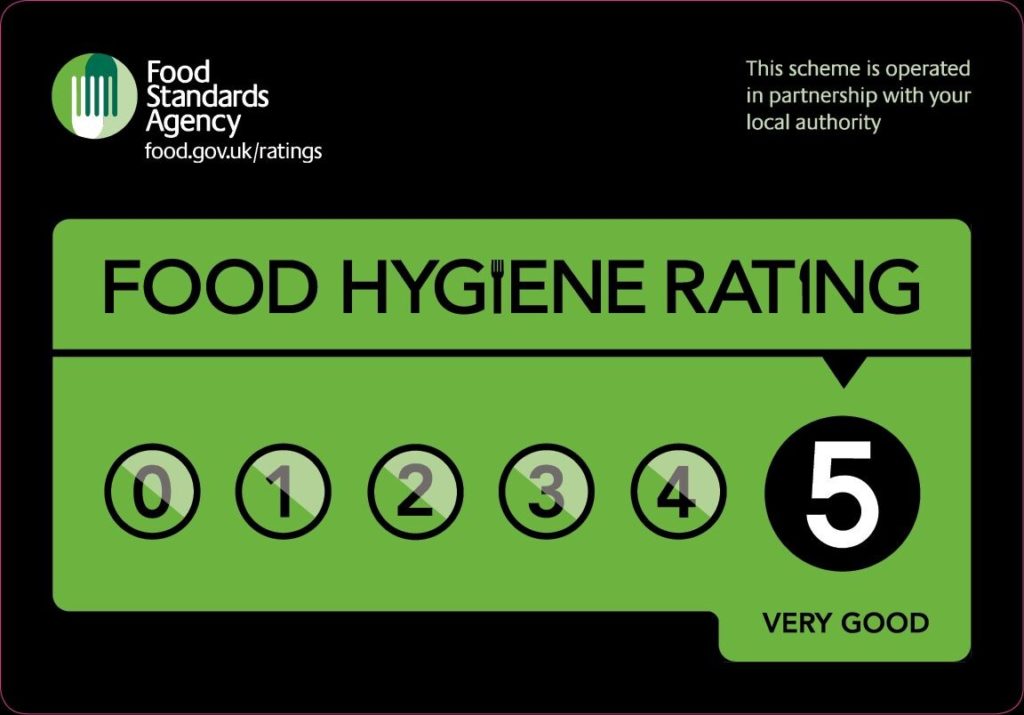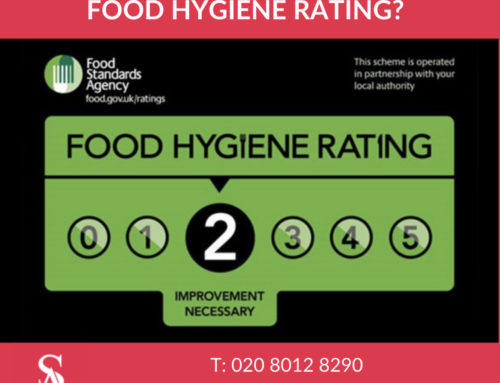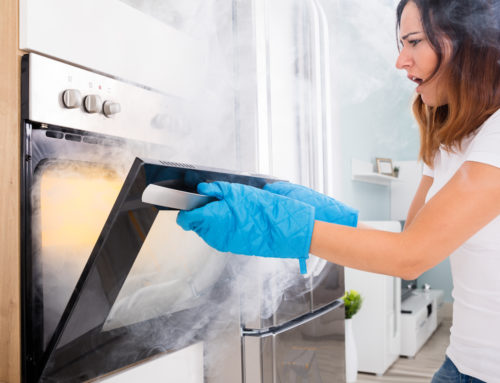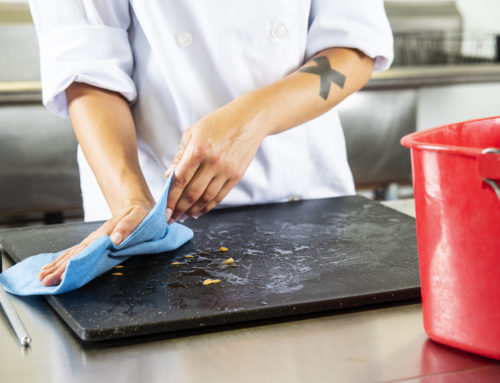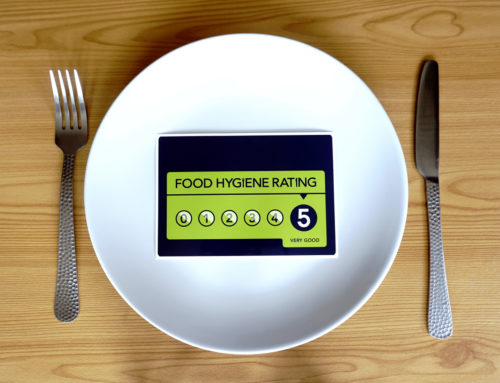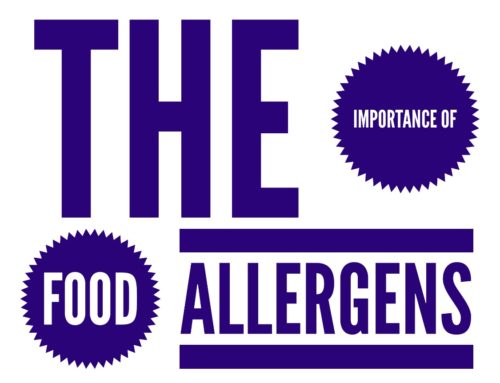Would you like to achieve a 5 Star Food Hygiene Rating Yes… well The Food Hygiene Expert has plenty of tips for you…
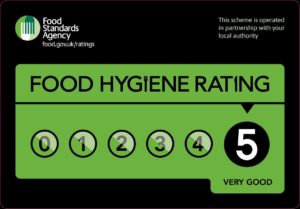
How to Improve your Food Hygiene Rating, The Food Hygiene Rating Scheme (FHRS) helps the public to choose where to eat out or shop for food by giving them information about the hygiene standards in restaurants, pubs, cafes, takeaways, hotels, and other places you eat out, supermarkets and other food shops are also included in the scheme. With more councils publishing the results of their inspections on-line and scoring food businesses on their food safety results, it is more important than ever for your business to be prepared when the Environmental Health Officer (EHO) pays you a visit. For the public to find out whether their local cafe, takeaway, restaurant or hotel has achieved a good food hygiene rating all they have to do is download the app and simply find out the Food Hygiene Rating or via the website, it could save their life!
My role as a Food Hygiene Expert for BBC 1 Watchdog, ITV and Channel Four and a Guest Speaker for The Guardian Newspaper and BBC Radio, is to constantly work with my high-profile clients to improve or sustain a 5 Star Food Hygiene Rating. I am often asked by food business owners what are the key things I would look for when reviewing their food business and what they need to do immediately to improve their food hygiene rating for their business. I have listed some top tips below which are not only useful to apply to your business ready for the Environmental Health Officer (EHO) visit, but will also be very useful in ensuring your business is and remains compliant with the current Law.
How is a hygiene rating worked out?
An EHO inspects a business to check that it meets the requirements of food hygiene law in the UK, the EHO is from the local authority where the business is located. It is important that you provide as much information as possible for the EHO on every inspection and remember they can turn up and inspect your food business unannounced!
At the inspection, the EHO will check:
- how hygienically the food is handled – how it is delivered, stored, prepared, cooked, cooled, reheated and hot hold as an example.
- the condition of the structure of the buildings – the cleanliness, layout, lighting, ventilation, toilets and other facilities
- how the business manages what it does to make sure food is safe by their paperwork and so that the officer can be confident standards will be maintained in the future
Each of these three elements is essential for making sure that food hygiene standards meet requirements and the food served or sold is safe to eat. The hygiene standards found at the time of inspection are then rated on a scale, at the bottom of the scale is ‘0’ – this means urgent improvement is required and at the top of the scale is ‘5’ – this means the hygiene standards are very good. If the top rating is not given, the EHO will explain to the business owner or manager what improvements need to be made and what action they can take to improve their hygiene rating.
The rating given shows how well the business is doing overall but also takes account of the element or elements most in need of improvement and also the level of risk to people’s health that these issues pose. This is because some businesses will do well in some areas and less well in others but each of the three elements checked is essential for making sure that food hygiene standards meet requirements and the food served or sold to you is safe to eat.
Remember… To get the top rating of ‘5’, businesses must do well in all three elements.
There are a number of self-audit checks you can carry out to make sure this is the case.
Record keeping

Whether you are using the Safer Food Better Business (SFBB), a food safety management system (HACCP) or another scheme it is important to keep daily checks on the activities in the kitchen. Start-up checks, refrigerator temperature checks, hot hold checks etc. may take a few minutes to perform each day but are vital in recording that all kitchen activities are being performed correctly. They build up a body of evidence to prove that you are doing everything possible to produce safe food.
- Tip 1 – Don’t forget to fill in the corrective actions/diary section. If you have a fridge breakdown, for example, writing it down could be important in proving how you dealt with the problem.
- Tip 2 – If you have one person who is responsible for filling out the checks. What happens when they are on holiday? Make sure another member of staff is trained and ready to do the checks in their absence. If you have a food poisoning incident and no records exist during the weeks that it occurred explaining that the person responsible was on holiday will not be acceptable.
- Tip 3 – Keep on top of change! If you get a new fridge or freezer or start a new activity e.g. serving a hot buffet, don’t forget to add the appropriate checks to the list.
Cleaning
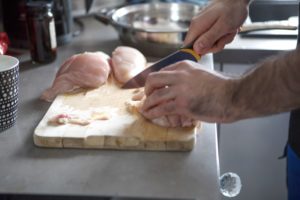
Cleaning of the kitchen should take place on a daily basis with some cleaning being done less frequently. However often cleaning is performed it must be recorded as having been done. Using the right chemicals and protective apparatus is vital, washing up liquid will not sanitise a surface! Know your chemicals.
- Tip 4 – Use the right chemical for the right job and at the correct concentration and ensure whoever is cleaning knows how to clean properly.
Training

Well trained, informed staff are an asset to your business. All staff, whether permanent or temporary should have some level of food hygiene training. It may be sufficient for temporary staff with a low level or responsibility to just read through a food hygiene leaflet. More experienced staff with more responsibility e.g. the chef will need to attend a hygiene course like Level 2 in Food Safety and perhaps a Hazard Analysis Critical Control Point (HACCP) course depending on the nature of your business.
- Tip 5 – If staff have limited knowledge of the English language find a trainer who can train them and answer questions in their native tongue.
- Tip 6 – Make sure staff training needs are analysed on a regular basis and their skills and knowledge are kept up to date.
Get advice!

Food safety consultants can help you and your staff to prepare for an inspection, they will get you started with a food safety management system that is tailor made to suit your business. Additionally, they may be able to offer an auditing service where they inspect the business on a regular basis and help you to keep on top of record keeping and hygiene.
Alternatively, you could try looking at your business with fresh eyes or ask a friend to, or write a series of questions for you perhaps basing it on your last inspection.
- Tip 7 – Visit other kitchens, those that you know to have a good food safety rating could help you to make improvements of your own.
- Tip 8 – Maintain a good relationship with your local EHO. Don’t be afraid to ask their advice, they have a lot of experience and want to help you.
Many food business owners may think they can’t afford a regular audit for an expert to make sure that their food safety standards are up to scratch, or they may overlook staff training needs, but the cost of keeping up to date with these things is going to be far less than a food safety incident could cost your business in the long run.
Success!
If you have a proactive approach and put all the right measures in place your business will benefit, your staff and customers will be happy and you will end up with a 5 Star Food Hygiene Rating and a sticker to display in your food business window!
